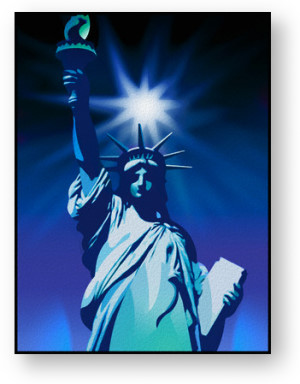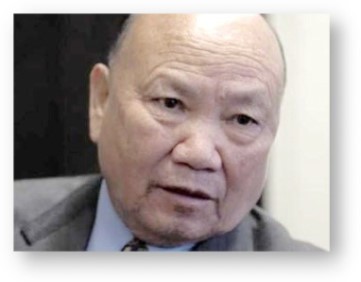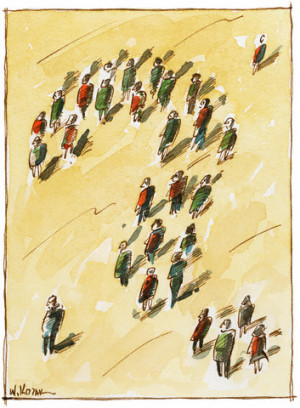This spring semester, I am again teaching my “The Sociology of Immigration” course, whose description reads, “This course examines who, why, and how different groups immigrate to the U.S. and what happens once they arrive — how they are received by mainstream society and how they adjust to their new country. Specific issues include settlement, education, identity, assimilation, discrimination, employment, language, marriage, legal status, and political participation.”
With that in mind, I would like to share my list of films, videos, and documentaries that I think are good choices for showing in introductory classes focused on immigration (the videos are most suited for college and advanced high school courses). As we all know, the political, economic, and cultural issues related to immigration are some of the most emotional, controversial, and hotly-debated topics in American society today. While the documentaries listed here tend to emphasize a comprehensive approach to immigration reform, they all do an excellent job in portraying and highlighting just how complex and even contradictory this issue is.

The following list is organized by topic and corresponds to the chronological order in which I discuss each topic in my “Sociology of Immigration” course. For each topic, I highlight the documentary that I tend to show the most often, followed by other videos that I consider to be good choices for that topic as well. This post focuses the the first few topics of my immigration course — the history and global context of immigration. Part 2 will focus on issues specific to unauthorized immigration and Part 3 will emphasize socioeconomic attainment, mobility, and assimilation.
Basic Concepts: The Racialized Landscape
In this first section of the course, I lay out the sociological framework and institutional nature of the U.S.’s racial/ethnic landscape, within which the issues of immigration are framed and structured. I focus on how, contrary to historical and contemporary ideals of being “colorblind,” American society has been and continues to be highly racialized and these mechanisms of racialization impact immigration.
- Race: Power of an Illusion (Episode 2): This excellent PBS series explores the social and political construction of race and perceived racial differences. As it relates to immigration, this episode takes an in-depth look at how the identity of “American” has been closely linked with Whiteness and the inherent barriers that people of color and immigrants have to overcome in order to formally and informally be considered “real” Americans.
- The Color of Fear
- Race, the World’s Most Dangerous Myth
- Understanding Race
Historical Patterns of Entry and Restriction
In this section, I summarize the major waves of immigration into the U.S. through the years, along with the evolution of immigration laws and regulation in U.S. history.
- Between Two Worlds: Produced by PBS and part of the Becoming American series, this episode examines the events leading up to the Chinese Exclusion Act of 1882 and its effects on Chinese Americans and their families who were kept apart by both ancient custom and U.S. law. It also describes way in which a few laws also provided relief as Chinese Americans turned to the courts for justice.
- Carved in Silence: Chinese Immigration During Exclusion
- Ancestors in the Americas: Chinese in the Frontier West
- Roots in the Sand
- The Italians in America
- Out of Ireland
Motivations & Incorporation: Past & Present
This section explores the multidimensional and multi-level process of how immigrants have been received by mainstream American society and how they have adapted to the challenges and opportunities in the first generation of life in the U.S. I also discuss the major theories of why and how immigration happens, particularly as they relate to global political, economic, and cultural forces.
- Mountain’s Mist and Mexico: Part of the After the Immigrant documentary series, this episode follows the stories of individual Mexican immigrants to illustrate the interconnected push and pull factors that have contributed to the long history of Mexicans in the U.S.
- The New Americans (5-part series)
- Bracero Stories
- Global Voices: Beyond the Border
- Refugee
- On the Other Side
- Shaolin Ulysses
- And the Pursuit of Happiness
- From a Different Shore: The Japanese-American Experience
The Global Context
Drawing on the global issues inherent in the immigration process, this section explores some examples of the variety of experiences and issues of immigration in other countries around the world. Students in my class find it useful to compare and contrast the experiences of immigrants in other countries to those of immigrants to the U.S.
- Dying to Leave: The Dark Business of Human Trafficking: This video illustrates how globalized forces can lead to desperation on the part of people, who then become unwittingly entangled in the illicit human trafficking business in many countries around the world.
- Crossroads: Inside the European Union
- Golden Venture
- Seoul Train
- Witness to a Secret War
- Return to the Border
- The Other Europe
- Tokyo: The Neon City
- Fortress Europe: Death on the Border





